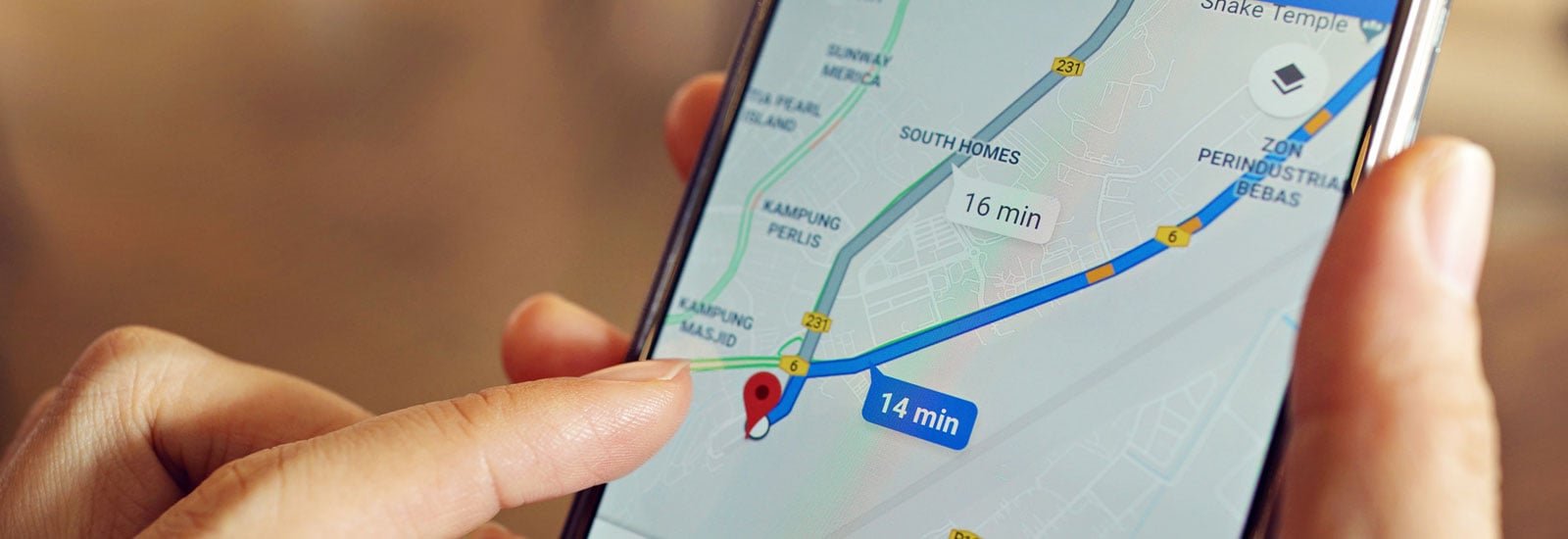Do you remember the last time you were lost? Chances are you were without a phone. In just a few decades we have gone from relying on paper and the kindness of strangers to find our way to using digital maps.
The digital revolution of wayfinding did not come from doing what paper maps did, but from creating new functionality. Google maps not only gives you the quickest route to work without traffic, but also the quickest route to a wine bar in a neighbourhood you did not know, from your exact location. This is one of the reasons why 67% of smartphone owners use Google Maps.
The built in Google search feature, combined with reviews from other users allows you to find what you are looking for and have a peek inside through photos and comments. This creates the perfect balance between a spontaneous experience and the safety net of word to mouth knowledge. Google Maps makes the wonders of urban cities accessible for the local and the first time visitor alike.
 Google Maps goes beyond simple wayfinding. You can add stops on your way to your final destination, use voice control, easily find where you parked your car, add your morning commute, integrated music players to the navigation system, and download offline maps. My favourite feature currently is the possibility to add a location in Google calendar that will notify me when it is time to go, showing me the best route to arrive right on time for the event.
Google Maps goes beyond simple wayfinding. You can add stops on your way to your final destination, use voice control, easily find where you parked your car, add your morning commute, integrated music players to the navigation system, and download offline maps. My favourite feature currently is the possibility to add a location in Google calendar that will notify me when it is time to go, showing me the best route to arrive right on time for the event.
But Google Maps makes our lives easier in more ways than we realise. Mapping is the foundation for many of the services we enjoy today, from Uber to food deliveries to virtual realities games, or even the safety of our children. Digital maps create a network on which businesses can build on to create seamless services and integrated solutions. This means that in the future, your next haircut could be automatically booked through the combination of maps showing the location and barber information, and calendars indicating the frequency of your hair cuts.
As we move more and more towards smart home and cities, these kind of solutions will become increasingly viable, all in an effort to alleviate the mundane tasks out of your daily life. The integration of Google apps and data collection allows for an intuitive experience tailored to each user. You may not like the idea of it, but in practice, it means you find the perfect wine bar effortlessly as the search engine knows your preferences, and books your hair appointment with your favourite barber.
So, if we’ve gone from reaching to our glove box for directions to reaching in our pocket for more than wayfinding, what else can we expect for the future of mapping? Well, the possibilities are endless, but what is important to remember is that Google Maps and its other services, are here to serve your experiences. Therefore, the question is not what application will the next update showcase, but rather, what do YOU as a user want. Maps are not about not getting lost anymore, but about making the best of what is available to you.
If you liked this blog post, you'd probably also like our blog about the Google Maps features that let you explore the world.
February 8, 2019




.png)